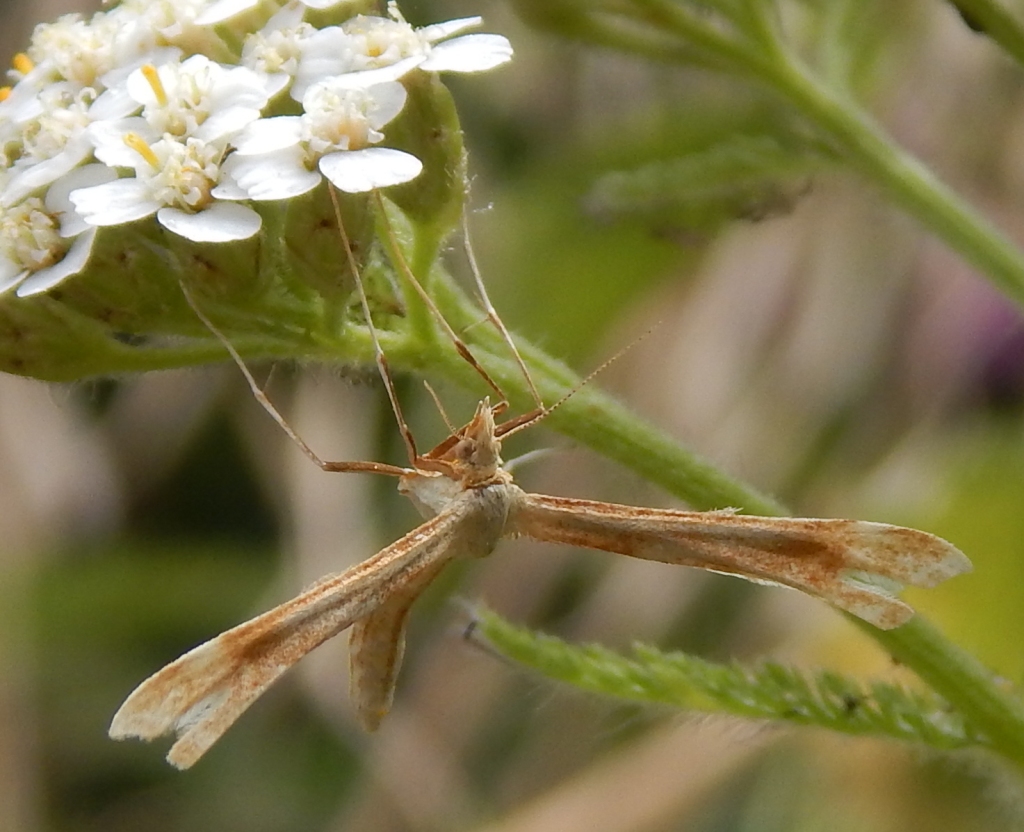
[019] Amblyptilia acanthadactyla, Beautiful Plume
Gillmeria pallidactyla, Yarrow Plume
Introduction
Amblyptilia acanthadactyla, the Beautiful Plume moth, is one of several Plume Moths found in Britain. Although they are medium sized and share some characteristics with butterflies they are usually classified as micro-moths.
Plume Moths have very narrow feather-like wings, which they hold straight when resting.
I will also consider other Plume Moths such as Gillmeria pallidactyla, the Yarrow Plume and Emmelina monodactyla, the Common Plume.
Taxonomy
Kingdom – Animals
Phylum – Arthropods
Class – Insects
Order – Lepidoptera (Butterflies and Moths)
Family – Pterophoridae (Plume Moths)
Genus – Amblyptilia, Gillmeria
Scientific Name – Amblyptilia acanthadactyla, Gillmeria pallidactyla
Name
Amblyptilia acanthadactyla has one of the longest Scientific Names you will meet in this blog but I can’t trace its meaning. ‘-Ptilia,’ like Plume in the common name, means ‘feather,’ and ‘-dactyla’ means ‘finger(s).’ With the obvious wing shape of Plume Moths, many of them have names with ‘-dactyla,’ referring to finger-like wings.
There is no obvious meaning for ‘ambly-’ and ‘acantha-’ could mean prickly so maybe acanthadactyla refers to the pointed end to the wing.
For the Yarrow Plume, I would assume that the genus is named after someone called Gillmer, and its pale coloured wings could be called pallid fingers.
Description
There are about a thousand species of plume moths in the family Pterophoridae, of which about forty are found in Britain.
Both the forewings and hindwings split into elongated, narrow, feathery spars. When they rest the wings are extended at right angle to the body and rolled up. This makes very effective camouflage.
They can be pests as each species generally attacks and eats a single plant species.
All plume moths are fairly similar in appearance with plain or mottled wings in varying shades of brown.
Amblyptilia acanthadactyla is a relatively dark reddish-brown with patterned wings. I suppose it’s one of the better-looking ones. Somebody has named them ‘Beautiful’.

Gillmeria pallidactyla is a much lighter brown.


Habitat
The Beautiful Plume feeds on a number of plants including Hedge Woundwort, cranesbills, heathers and mints.
The Yarrow Plume feeds mostly on [004] Yarrow.
Other Notes
These may be hard to spot but they seem to believe in their camouflage. Perhaps they are playing dead. If you find one and try to take photographs, they are unlikely to fly away. I have found them in my garden and even in the house.
See also
There about forty plume moths seen in Britain. Some, such as the Yarrow Plume are named after the food plant of the larva. The well-named Common Plume is widespread over Britain as are the Beautiful Plume and Yarrow Plume.
